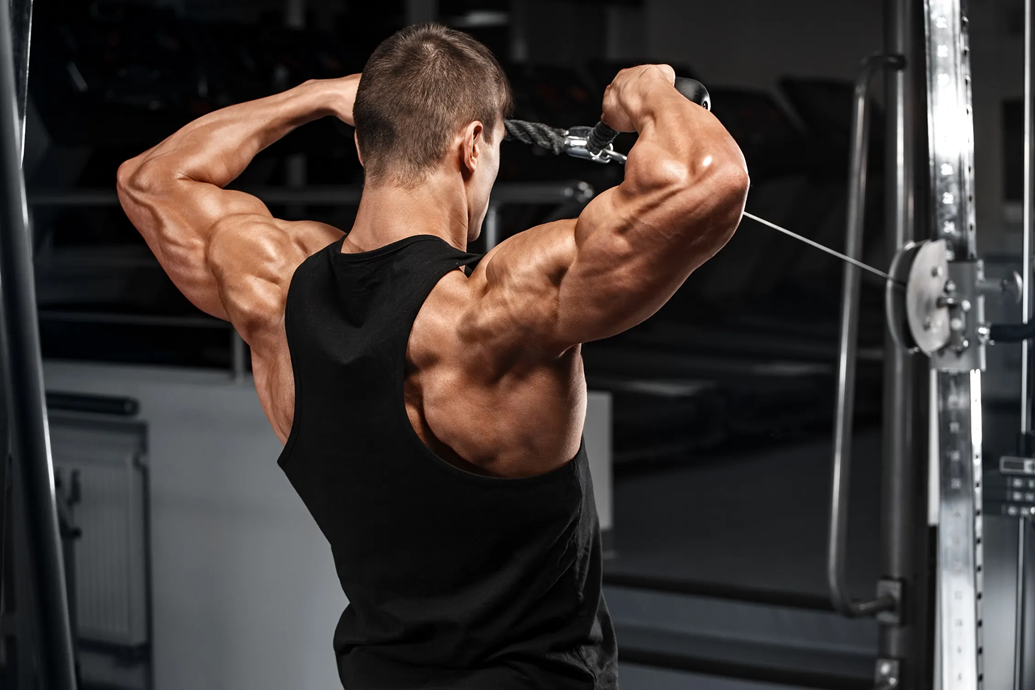Are Rear Delts Back or Shoulders? Are They Hard to Build?
When it comes to training, the rear deltoids (rear delts) often don’t get the same attention as the front and side delts. Many bodybuilders struggle to develop them, leading to imbalances and a lack of overall shoulder aesthetics.
But what exactly are the rear delts? Do they belong to the back or the shoulders? Are they hard to build, and what are the best exercises to target them? We will answer these questions and provide insights into how to train your rear delts effectively.
Are Rear Delts Part of the Back or Shoulders?
The rear delts, or posterior deltoids, are one of the three heads of the deltoid muscle, which also includes the anterior (front) and lateral (side) delts.
Because they are part of the deltoid group, they are classified as a shoulder muscle. However, they are unique because they also play a significant role in pulling movements, similar to back muscles.
Rear delts contribute to shoulder extension and external rotation, meaning they assist in pulling motions like rows and face pulls.
This dual involvement often leads to confusion—some people train rear delts with their shoulder routine, while others include them in back workouts.
The reality is that they work during both types of exercises, but dedicating specific training to them is essential for full development.

Are Rear Delts Hard to Build?
Yes, rear delts can be one of the most challenging muscle groups to develop, primarily because they are often neglected. Here’s why they can be difficult to build:
Lack of Direct Focus – Many lifters emphasize the front and side delts while neglecting the rear delts, leading to imbalances.
Limited Activation in Compound Lifts – While rear delts do assist in pulling movements, they are not the primary movers. As a result, they don’t get enough direct stimulation from traditional back exercises.
Poor Mind-Muscle Connection – Many people struggle to feel their rear delts working during exercises, which can reduce the effectiveness of their training.
Postural Issues – Due to daily habits like sitting, hunching over screens, and using improper lifting form, the rear delts can become underdeveloped, making them harder to activate during workouts.
While they may be difficult to build, the good news is that with proper exercise selection and consistent training, you can develop strong, well-defined rear delts.
Best Exercises for Rear Delts
To effectively train rear delts, you need exercises that isolate and activate them directly. Here are some of the best movements to include in your routine:
Reverse Pec Deck (Machine Rear Delt Flys)
- This machine is excellent for isolating the rear delts without involving too many secondary muscles.
- Keep the movement slow and controlled to maximize tension on the muscle.
Dumbbell Rear Delt Flys
- This can be done seated, standing, or bent over. The key is to maintain a slight bend in the elbows and focus on squeezing the rear delts at the top of the movement.
Face Pulls
- This is one of the best rear delt exercises because it also improves shoulder health.
- Use a rope attachment on a cable machine and pull towards your face while keeping your elbows high.
Bent-Over Reverse Cable Flys
- The constant tension from cables makes this a great variation of the rear delt fly.
- Adjust the cable height to match your shoulder level for maximum activation.
Rear Delt Rows (Wide-Grip Rows to the Chest)
- Using a wide grip and pulling towards the upper chest rather than the stomach shifts the focus to the rear delts rather than the lats.
Lying Rear Delt Raises
- Lying face down on an incline bench helps eliminate momentum, making the movement more effective.
Can You Train Rear Delts Every Day?
While rear delts recover relatively quickly compared to larger muscle groups, training them every day is not necessary and may lead to overtraining. Instead, a balanced approach works best:
2-3 times per week – This frequency is ideal for most people, allowing enough stimulus for growth while ensuring proper recovery.
Light Activation on Rest Days – If you feel your rear delts need extra work, you can do light band pull-aparts or face pulls on rest days without overloading them.
Balanced Shoulder Training – Avoid overtraining the front delts at the expense of rear delts. Many people have overdeveloped front delts due to excessive pressing movements (bench press, overhead press). Adding more rear delt work can help maintain balance.
How to Isolate and Strengthen the Rear Delts
The rear deltoids (rear delts) are an essential part of shoulder development, contributing to posture, stability, and overall upper-body strength.
However, they are often underdeveloped compared to the front and side delts because they receive less direct stimulation in traditional pressing movements. Strengthening them requires targeted exercises and proper technique.
How to Tell if Your Rear Delts Are Weak
Weak rear delts can manifest in several ways, including:
Poor Posture: Rounded shoulders and a forward head position often indicate weak posterior delts and upper back muscles.
Shoulder Imbalances: If your front delts and chest overpower your rear delts, you may experience difficulty with pulling movements or have an uneven appearance.
Lack of Strength in Pulling Movements: Struggles with exercises like rows, face pulls, or reverse flies suggest rear delt weakness.
Shoulder Pain or Discomfort: Weak rear delts can contribute to impingements or instability, leading to discomfort during overhead or pressing movements.
Developing strong rear delts is crucial for aesthetics, shoulder health, and overall upper-body balance.
Though they are often overlooked, they play a significant role in posture, pulling movements, and preventing shoulder injuries. Because they are not heavily involved in major compound lifts, they require direct and intentional training.
By incorporating rear delt-specific exercises like reverse pec deck flys, face pulls, and rear delt rows into your routine, you can ensure balanced shoulder development.
Training them 2-3 times per week with proper form and intensity will yield the best results over time.
If you’ve been neglecting your rear delts, now is the time to start giving them the attention they deserve. A strong, well-rounded physique isn’t just about the front and side delts—rear delts are just as important for aesthetics and function!




